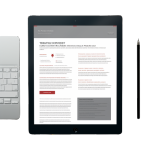
Restaurant traffic remains down across most of the industry, and if there’s a light at the end of this tunnel, it sure is dim.
As Technomic senior principal David Henkes told the crowd at this week’s US Foods’ Foods Fanatics event in Las Vegas, “We’ve still got a long way to go yet.”
Frustratingly, these muted traffic patterns persist despite a remarkable pace of menu innovation, significant investments in consumer-facing technologies to ensure an easier experience, and a sharper focus on marketing. What gives?
“A big part of what’s happening is consumer confidence and how they feel about their current economic situation,” Henkes said, pointing to the Conference Board Consumer Confidence Index which shows that consumer confidence levels are at a historic low.
“Consumers were more confident in their situations during the pandemic than they are today,” he said.
New data from Revenue Management Solutions substantiates this trend as it applies to the quick-service category specifically. In a comprehensive analysis of the past 15 years’ lowest-performing traffic periods, RMS examined 10 key macroeconomic indicators to determine what drives guest visits.

Historically, gas prices and unemployment were highly correlated with decreasing traffic. However, in 2025, economic factors remain stable, yet guests report fewer restaurant visits, and QSR traffic is on the decline. The difference now is that consumer confidence has dropped 14 index points since 2023.
“Right now, confidence is king,” RMS chief executive officer John Oakes said in a statement. “While traditional economic factors such as inflation, wages, and fuel costs still matter, consumer confidence tells us how guests will behave in the weeks and months ahead.”
RMS estimates that a 10-point decline in confidence could lead to a 0.5% to 2% decline in traffic within just two months. What is eroding confidence is clearly lingering inflation. In July, for instance, menu prices continued to outpace the overall Consumer Price Index, and by quite a bit — the CPI rose 2.7% year-over-year while food-away-from-home prices rose 3.9%.
“A big driver of declining consumer confidence in 2025 is inflation. Higher prices continue to impact consumers across the board. Add in layoffs, the tariff situation, and the potential for more price increases, and it’s clear that the big challenge for the industry is the burden the consumer is feeling right now, like they just can’t get ahead,” Henkes said.
Not only is traffic impacted by historically high menu prices, so, too, is frequency. Henkes said that although we hear most often about how these prices are impacting lower-income consumers, they are impacting higher-income consumers as well.
“From 2023 to 2025 to date, there has been a minor drop in the $50,000 to $100,000 (income) consumer and, statistically, a 4-point drop from higher income consumers,” he said. “Higher prices are impacting everyone and their behavior relative to restaurants.”
Some of this is reality and some of this is perception. Prices have stabilized more for limited-service menus than full-service menus, for instance, yet a recent survey from RMS finds that 75% of consumers believe that QSR prices are higher than the previous month. In Q2 2025, QSR average prices were up 1.3% year-over-year, which is significantly lower compared to 2.9% in Q2 2024 and 10.6% in Q2 2023.
That said, menu pricing has begun to increase again, as evidenced by the 3.9% July number versus 3.8% in both June and May.
This uptick comes as consumer income has started catching up to menu prices. In the spring of 2024, Henkes noted, wages finally started outpacing general inflation after several years to the contrary, but the gap between those wages and menu prices remains.
“We were pretty bullish going into the beginning of last year and into this year that pricing would start to moderate, but now we see it accelerating again. It continues to be more expensive to dine out and that tells us consumers’ incomes need to still catch up to menu prices,” Henkes said.
Of course, that’s easier said than done when input costs — including food, packaging, and labor — remain significantly higher than pre-COVID. From March 2020 to March 2025, aggregate restaurant wages were up by 40%, for instance. Indeed, higher costs are operators’ biggest concern, according to Technomic research.
“It’s very hard to absorb that into your margins without passing prices along,” Henkes said. “Operators’ inability to fully pass on these cost increases means operators are seeing significant margin erosion.”
Though food costs are a major concern, Henkes said more operators are starting to worry more about their business slowing down due to the growing burdens faced by consumers. In this environment, it’s important to double down on both innovation and experience.
“There is a big push to create experiences through the menu, through service, through unique events,” Henkes said. “Consumers tell us they’re looking for new, exciting menu items and (limited-time offers).”
Operators are responding — the industry put out a record number of LTOs last year.
“The menu can be a traffic driver if it’s done right,” Henkes said. “Regardless of what happens with the overall economic situation, we remain bullish because we know this industry thrives on innovation.”
What has impacted QSR traffic through the years
RMS analyzed the top macroeconomic indicators that have had an impact on QSR restaurant traffic over the past 15 years:
-
2009-2011: Traffic was down as much as 4%, driven primarily by gas prices and unemployment
-
2020-2022: COVID-19 restrictions and inflation drove traffic declines of up to 15% year-over-year
-
2023 to present: Rising inflation has created uncertainty, causing traffic to drop an average of 1%, in addition to the already significant drops during the COVID years
Contact Alicia Kelso at [email protected]
Follow her on TikTok at https://www.tiktok.com/@aliciakelso





